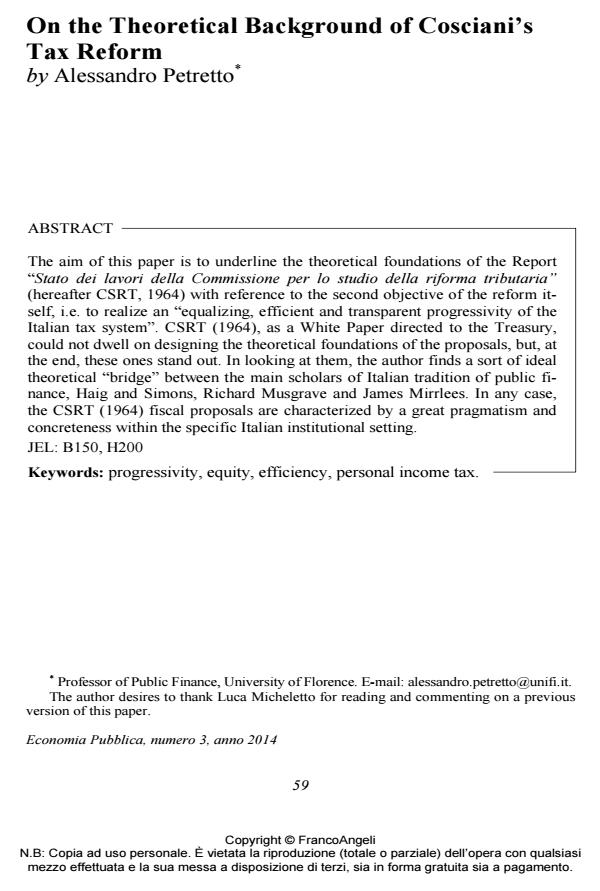On the Theoretical Background of Cosciani’s Tax Reform
Journal title ECONOMIA PUBBLICA
Author/s Alessandro Petretto
Publishing Year 2015 Issue 2014/3
Language English Pages 21 P. 59-79 File size 187 KB
DOI 10.3280/EP2014-003004
DOI is like a bar code for intellectual property: to have more infomation
click here
Below, you can see the article first page
If you want to buy this article in PDF format, you can do it, following the instructions to buy download credits

FrancoAngeli is member of Publishers International Linking Association, Inc (PILA), a not-for-profit association which run the CrossRef service enabling links to and from online scholarly content.
The aim of this paper is to underline the theoretical foundations of the Report "Stato dei lavori della Commissione per lo studio della riforma tributaria" (hereafter CSRT, 1964) with reference to the second objective of the reform itself, i.e. to realize an "equalizing, efficient and transparent progressivity of the Italian tax system". CSRT (1964), as a White Paper directed to the Treasury, could not dwell on designing the theoretical foundations of the proposals, but, at the end, these ones stand out. In looking at them, the author finds a sort of ideal theoretical "bridge" between the main scholars of Italian tradition of public finance, Haig and Simons, Richard Musgrave and James Mirrlees. In any case, the CSRT (1964) fiscal proposals are characterized by a great pragmatism and concreteness within the specific Italian institutional setting.
Keywords: Progressivity, equity, efficiency, personal income tax
Jel codes: B150, H200
Alessandro Petretto, On the Theoretical Background of Cosciani’s Tax Reform in "ECONOMIA PUBBLICA " 3/2014, pp 59-79, DOI: 10.3280/EP2014-003004